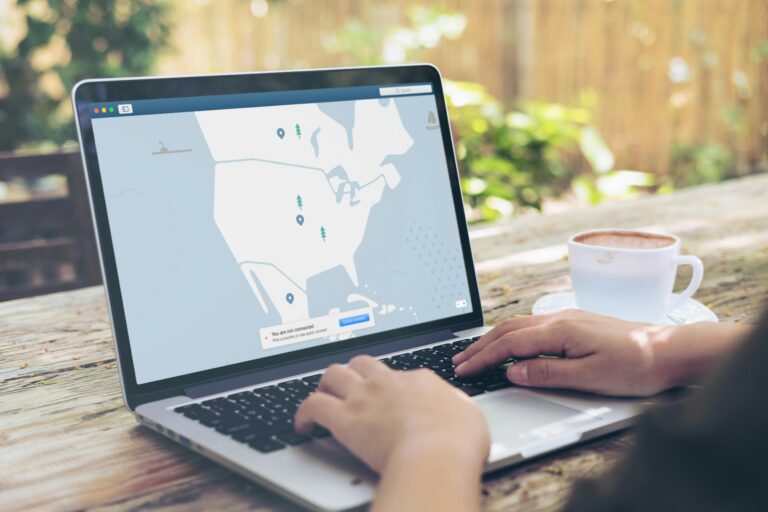In recent years, remote working has become the norm globally, and companies are hiring employees from distant corners of the world. This has been made possible by the presence of numerous technological tools.
Today, you can sit in Asia and work for a company in Australia. You can attend meetings over a video call and collaborate with other employees using online tools.
Today, we will talk about one such technical standard or protocol that allows you to use your computer from a remote location – Remote Desktop Protocol or RDP.
What is Remote Desktop Protocol?
Before we talk about the technical aspects of RBP, we would like to answer the basic question: what is RDP Protocol?
Firstly, a protocol means a technical standard. It is a set of rules that governs how data is transmitted between devices. So, RDP is a set of rules.
What are the rules for?
In RDP, the rules are for accessing your computer remotely.
So, you have remote desktop software that will use a protocol to allow you to access your desktop remotely. Many protocols for this purpose include VNC, ICA, and RDP. However, the most popular one is RDP.
Hence, to answer the question of what RDP is – It is a set of rules and procedures that allows users to access their computer remotely.
Microsoft released RDP Protocol, primarily used by devices working on the Windows operating system. While it can also work with Mac, the most common use is Windows.
How does RDP work?
Most of us have used or seen some form of remote desktop software. It allows a user to access a remote device from his computer by opening an application and typing the IP address of the target device along with a password. Once inside, the user can see the target computer’s screen on his screen and has predefined rights that allow him to complete various tasks.
When you use the RDP Protocol, a dedicated channel is opened for exchanging data between the two devices. The default port used is 3389. The information is sent via TCP/IP over this channel. Before sharing data, RDP ensures it is encrypted to secure the connection.
Remote desktop connection means the output (screen) from the remote device is transmitted to the current device, and the input (keyboard and mouse activity) is transmitted from the current device to the remote device.
One thing to note is a slight delay between the computer currently in use and the remote desktop. This is not more than a few milliseconds, and it happens because keystrokes and mouse activity have to be encrypted and sent over the network.
Advantages and Disadvantages of using RDP
| Advantages | Disadvantages |
| You can access your desktop or server remotely. This facilitates flexible work arrangements. | RDP has certain security concerns and has been a target of attacks. |
| IT administrators can troubleshoot remote computers within no time. | Its performance is dependent on network bandwidth. |
| This is a cost-effective solution as it is a built-in feature of Windows. |
How to secure your RDP use?
While RDP has been known to have some security vulnerabilities, here are some tips to help boost its security:
- Make sure that you create strong passwords. It should be of at least eight characters and must have uppercase and lowercase letters, numbers, and special characters.
- Enable multi-factor authorisation and limit the number of login attempts before the account is locked.
- If you use a VPN, ensure that RDP ports are behind the firewall.
- Do not permit administrative rights via RDP. If a hacker gains access to your login credentials, then administrative rights in his hands can be devastating.
- Create a whitelist of hosts that you can trust.
- Make sure that the client software and drivers are always updated.
Use cases of RDP Protocol
Here are some use cases of remote access using RDP protocol:
1. Remote work and telecommuting
2. IT support and troubleshooting
3. Server administration
4. Software testing
5. Training and e-learning
6. Accessing legacy applications
7. Pair programming
8. Data Analysis
9. Multimedia production and editing
10. Healthcare telemedicine
11. Customer support and helpdesks
Summing Up
To conclude, RDP access means the ability to use a device remotely. This opens up a world of possibilities. If you need a resource-heavy device for computing something but don’t have one handy, you can get remote access to such a device and run the process while watching it on your screen.
While until now, IT support and troubleshooting have been the areas where this service has been used, more and more businesses are opening up to the possibilities offered by remote desktops.
We hope this article helped you understand the basics of RDP Protocol and how it works. Here are some frequently asked questions for your quick reference.
FAQs on Remote Desktop Protocol
Q1. What are the system requirements for using RDP?
The current and remote devices must be running on compatible operating systems to use RDP. Also, the internet connection should be stable, and the remote computer must enable RDP settings. This will allow you to access the remote device.
Q2. Does RDP work only on the internet?
No, apart from the internet, you can use RDP across various network types like a local area network (LAN) or vast area network (WAN). However, it is essential to remember that the network’s performance will impact the speed of interaction with the remote server. Also, if it is an open public network, then make sure to use a strong password to access your account.
Q3. Does RDP support printing from the remote server to a local printer?
Yes, if you are accessing a document on a remote computer and want to print it locally, you can use RDP. Check the settings carefully and configure the printer to avoid any problems.



